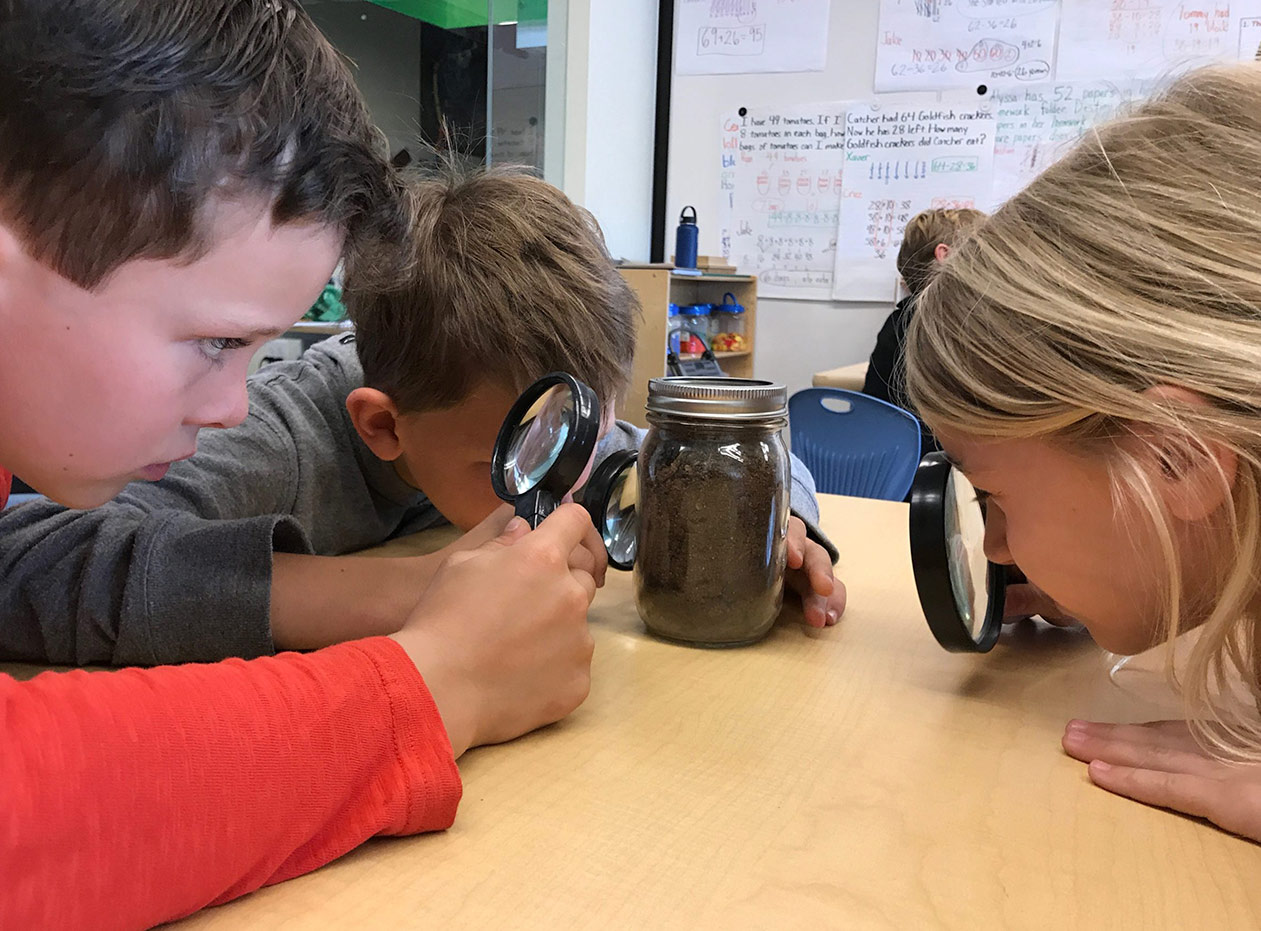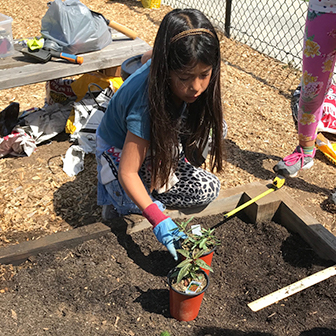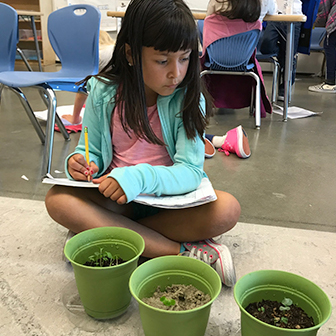Menu
PROJECT DESCRIPTION
INSTRUCTORS
SCHOOL SITE
LEVEL
SUBJECTS

How can we use science to grow a healthy and beautiful community garden?
What is a healthy garden? How can we use the garden to make our lives healthier?
How do we, as gardeners, create and maintain a healthy and beautiful garden?
This project was designed to get our students’ hands dirty in the school garden, to provide a hands-on learning experience in an authentic environment while utilizing and beautifying a school community space. We were inspired by the school garden at Twin Oaks Elementary School. We began by studying the components of soil and figuring out what makes soil healthy. We conducted several soil experiments, and recorded our discoveries in our science notebooks. In addition, we began preparing the soil in our garden beds, and planted various fruits, vegetables, and flowers to eat and attract pollinators.
After a general class study, students researched individual topics, and wrote their findings into informational paragraphs. In science, they learned about seeds, a plant cycle, flowers and pollination, and created models to explain these natural processes that create a healthy garden. We used peer critique and multiple drafts to revise our writing and our models, which was published in a field guide. As an action piece, students completed their research and began applying their learning to help our community. They brainstormed and created small action groups to share their learning with our community. These are student-centered groups that include teaching our community about pollination, global warming and composting, producing and performing songs about creating a healthy earth, reusing containers for potting plants, and creating a hummingbird feeder.
Throughout the project, students took ownership of the garden by preparing the soil, planting, weeding, harvesting, and observing the natural phenomena that occur daily. In art, students created a pollinator patio to provide a beautiful learning space in our garden.

NGSS Standards:
Plants depend on air, water, minerals (in the soil), and light to grow.
Plants depend on animals for pollination and/or to move their seeds around.
Different plants survive better in different settings because they have varied needs for water, minerals, and sunlight.
Plan and conduct an investigation collaboratively to produce data to serve as the basis for evidence to answer a question.
Make Claims Based on Evidence
Develop a simple model based on evidence to represent a proposed object or tool.
Deeper Learning Competencies:
Master core academic content: Students develop and draw from a baseline understanding of knowledge in an academic discipline and are able to transfer knowledge to other situations.
Think critically and solve complex problems: Students apply tools and techniques gleaned from core subjects to formulate and solve problems, including scientific inquiry, creativity, and persistence.
Work collaboratively: Students cooperate to identify and create solutions to academic, social, vocational, and personal challenges.
Communicate effectively: Students clearly organize their data, findings, and thoughts.
Develop academic mindsets: Students develop positive attitudes and beliefs about themselves as learners that increase their academic perseverance and prompt them to engage in productive academic behaviors. Students are committed to seeing work through to completion, meeting their goals, and doing quality work, and thus search for solutions to overcome obstacles.
Literacy Common Core Standards:
Conduct short research projects that build knowledge about a topic.
Write informative texts in which they introduce a topic, use facts and definitions to develop points, and provide a concluding statement or section.
With guidance and support from adults and peers, focus on a topic and strengthen writing as needed revising and editing.
Demonstrate command of the conventions of standard English capitalization, punctuation, and spelling when writing.

